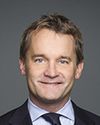I can tell you this morning that everyone remembers Mr. Rivard’s recent testimony. He impressed us greatly with his knowledge and his charisma. In the best of worlds, we would build on some of Mr. Rivard’s hypotheses, and your own, and then test them in certain museums. We can be very ambitious. We are, for example, in our study on regional media. In that case, our involvement as members of Parliament in each of our regions is to stand up for the vitality of our communities through the media. We are even planning to visit communities in remote regions that have to deal with the situation most specifically. We are ambitious; I feel that the committee wants to solve some problems.
Do any points jump out at you, in your view?
Earlier, my colleague was talking about training. A centralized storage facility has been discussed. People have also talked to us about a fund for regional coordination. If I were planning a trip to a region, it would be good to deal with each of the museum-related themes.
For the celebrations of the 150th anniversary of Canadian Confederation, that need for distance training could be tested with volunteers. We could tell them about the themes of the 150th anniversary. It could provide a kind of common approach that you could provide to your visitors, while still preserving the regional angle on the ways things were experienced at the time.
We do not have to reinvent the wheel, as they say. Personally, I am looking for a solution, something stimulating, an immediate test, rather than a thick document that, at the end of the day, is not going to be used.




